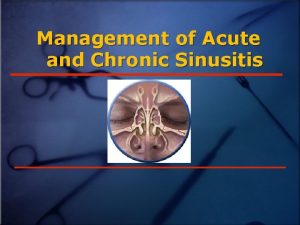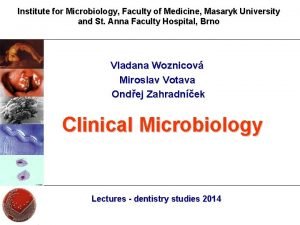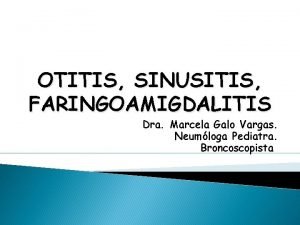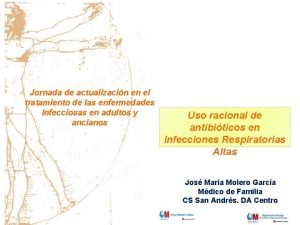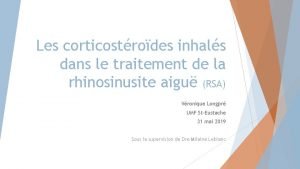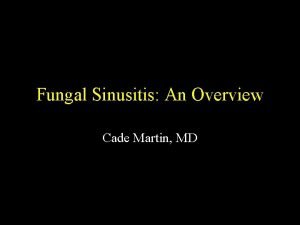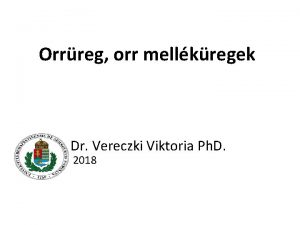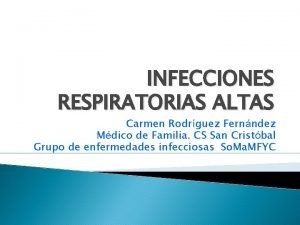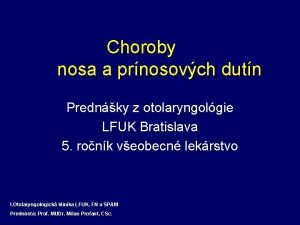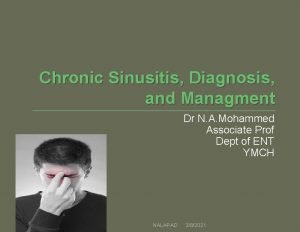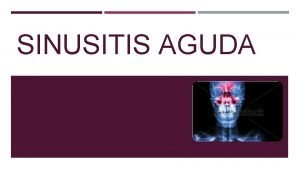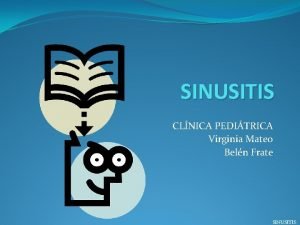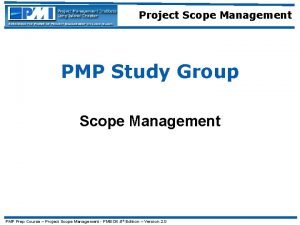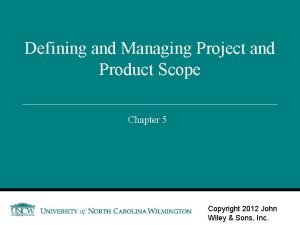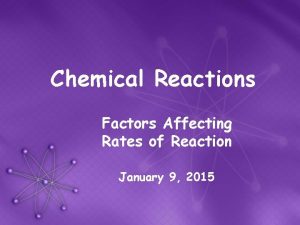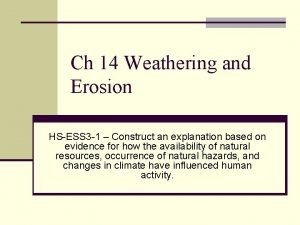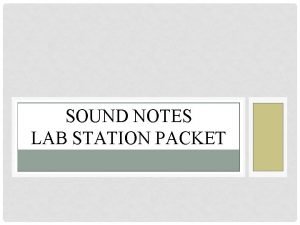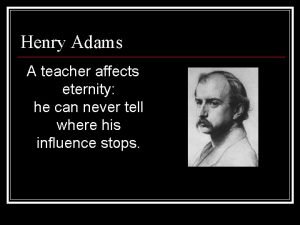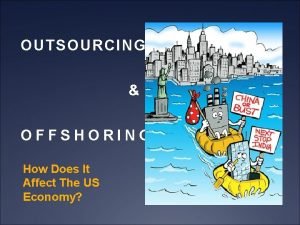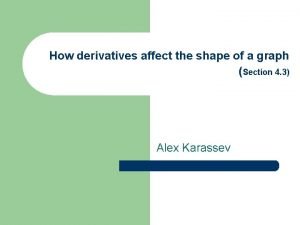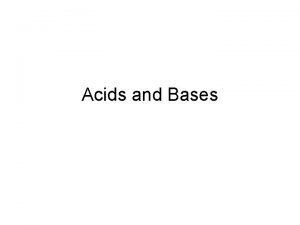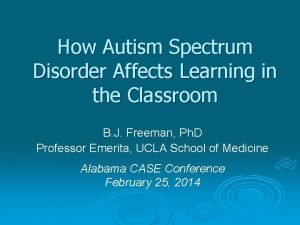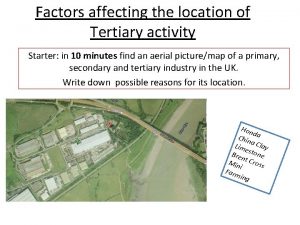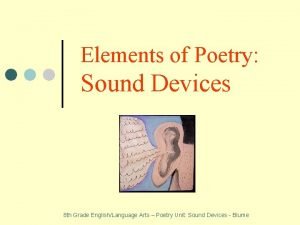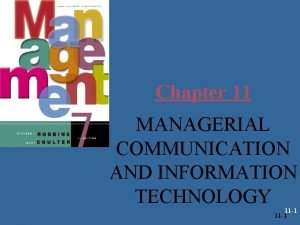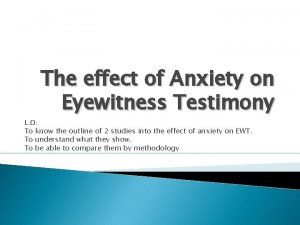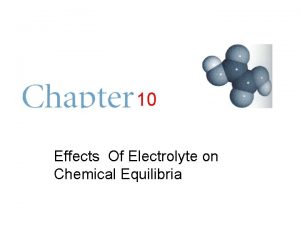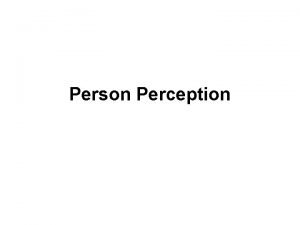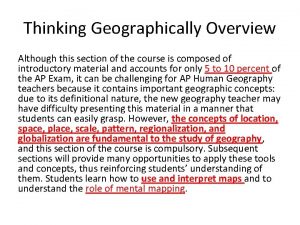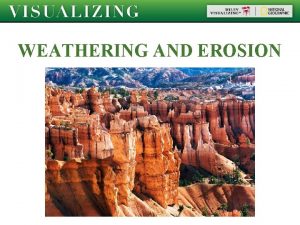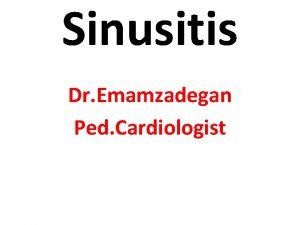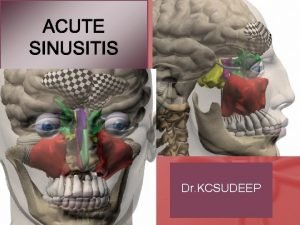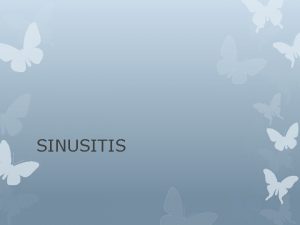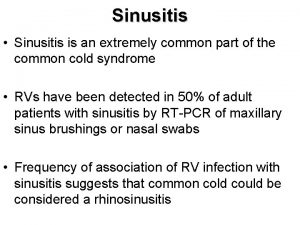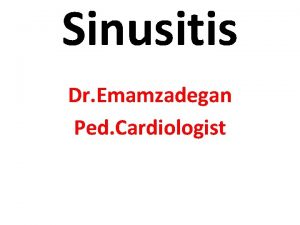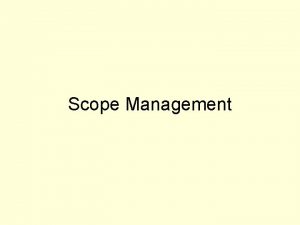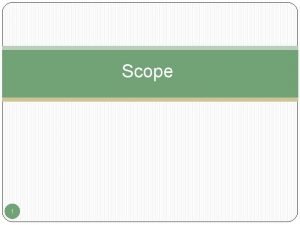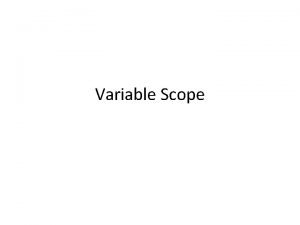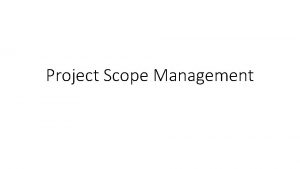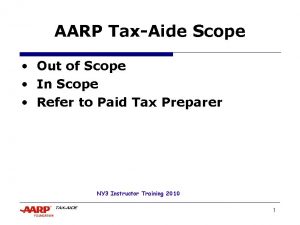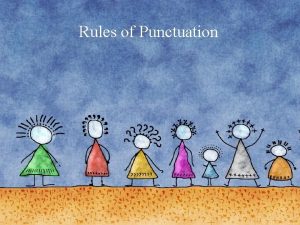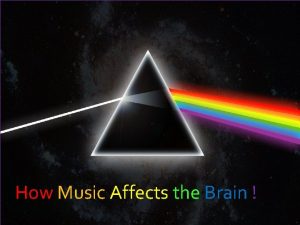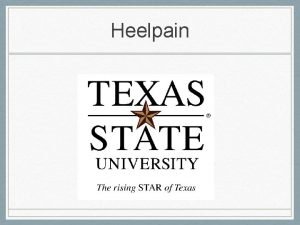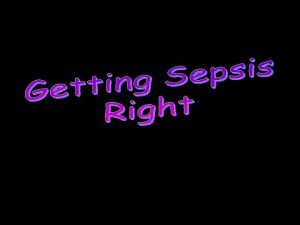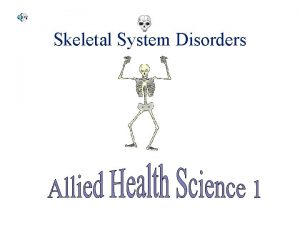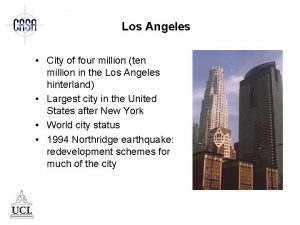sinusitis Scope of Sinusitis Affects 30 35 million











































- Slides: 43

sinusitis

Scope of Sinusitis • Affects 30 -35 million persons/year • 25 million office visits/year • Direct annual cost $2. 4 billion and increasing • Added surgical costs: $1 billion • Third most common diagnosis for which antibiotics are prescribed 2

Development of Sinuses • Maxillary and ethmoid sinuses present at birth • Frontal sinus developed by age 5 or 6 • Sphenoid sinus last to develop, 8 -10 3

Normal Sinus • Sinus health depends on: – Mucous secretion of normal viscosity, volume, and composition, – normal mucociliary flow to prevent mucous stasis and subsequent infection; – and open sinus ostia to allow adequate drainage and aeration. 4

Physiologic Importance of Sinuses • Provide mucus to upper airways – Lubrication – Vehicle for trapping viruses, bacteria, foreign material for removal • Give characteristics to voice • Lessen skull weight • Involved with olfaction 5

ANATOMY • Septum • Nasal Turbinates – Concha Bullosa – Middle Turbinate • Sinuses: Maxillary, Ethmoid (anterior and posterior), Frontal and Sphenoid – Osteomeatal Complex – Nasofrontal recess – Uncinate process (hiatus semilunaris)

ANATOMY (continued) • Ciliated pseudostratified columnar epithelium – Two layers of mucus • Thick “basement” layer • Thin less viscous layer that the cilia moves to the ostia – Mucosal Changes After Surgery and Long Term Disease • Neuroreceptors for smell (olfactory nerve) and airflow (located in the inferior and middle turbinates



1/23/2022 Professor Sameer Ali Bafaqeeh 10

Acute Rhinosinusitis (Viral) • Common Symptoms: Nasal discharge, nasal congestion, facial pressure, cough, fever, muscle aches, joint pains, sore throat with hoarseness. • Etiology, rhinovirus, influenza, parainflu, adenovirus, ent erovirus, RSV, …. . • Symptoms resolve in 10 -14 days • Common in fall, winter and spring. • Treatment: Symptomatic

Acute Bacterial Sinusitis • Causative agents are usually the normal inhabitants of the respiratory tract. • Common agents: Streptococcus pneumoniae Nontypeable Haemophilus Influenzae Moraxella Catarrhalis

SIGNS AND SYMPTOMS • Pain and/or pressure – frontal, maxillary, upper teeth, retro-orbital, crown of the head • temporal, parietal and occipital headaches are not generally associated with sinusitis • children under the age of 12 who complain of headaches and, without prompting from a parent, points to the top of their head, anterior face, eye, or posterior skull most likely have sphenoid sinusitis until otherwise documented by CT or MRI scan • Fever

SIGNS AND SYMPTOMS • Nasal congestion and/or drainage – Rhinorrhea • postnasal drainage • purulent • color does not determine infection • Obstruction – Deviated septum – Hypertrophy of turbinate(s) – Polyps

ACUTE SINUSITIS • Less than one month duration • Purulent drainage, fever, significant sinus pain and pressure • Isolated acute infection without recurrent “sinus symptoms” – Most commonly secondary to upper respiratory viral infection or other inflammatory condition • perennial allergic rhinitis with inflammation • obstruction of the ostia/drainage passages of the sinuses • primarily neutrophilic inflammation with a small amount of eosinophils

Diagnosis • Based on clinical signs and symptoms • Physical Exam: Palpate over the sinuses, look for structural abnormalities like DNS. • X-ray sinuses: not usually needed but may show cloudiness and air fluid levels • Limited coronal CT are more sensitive to inflammatory changes and bone destruction

Ethmoid Sinusitis

Coronal computed tomographic scan showing ethmoidal polyps. Ethmoid opacity is total as a result of nasal polyps, with a secondary fluid level in the left maxillary antrum.

Treatment • About 2/3 rd of patients will improve without treatment in 2 weeks. • Antibiotics: Reserved for patients who have symptoms for more than 10 days or who experience worsening symptoms. • OTC decongestant nasal sprays should be discouraged for use more than 5 days • Supportive therapy: Humidification, analgesics, antihistaminics

Antibiotics a) Amoxicillin (500 mg TID) OR b) TMP/SMX ( one DS for 10 days). c) Alternative antibiotics: High dose amoxi/clavunate, Flouroquinolones, macrolides, cefixime, cefuroxime, . .

CHRONIC SINUSITIS • Greater than three months duration – multiple treatments or infections within one year – multiple year history of recurrent infections or episodes of sinus pain and pressure – symptoms that coincide with changes in altitude or weather – chronic nasal congestion and drainage

CHRONIC RHINOSINUSITIS (CRS) WITHOUT POLYPS • Neutrophilic inflammation associated with obstruction and inflammation of sinus ostia

CHRONIC RHINOSINUSITIS (CRS) WITH POLYPS • Associated with eosiniphilic inflammation with some association with interleukin 4 and 5 and Ig. E mediated response • No difference in the composition of the mucin between systemic atopic patients versus nonatopic patients • Patients with genetic mucociliary transport diseases such as cystic fibrosis or, patients who have significant acquired changes of the mucosa following surgery may also have neutrophilic inflammation


ALLERGIC FUNGAL SINUSITIS (AFRS) • Non-invasive – local fungal hyphae in the mucin – allergic response to the fungus – polyps with thick grey to brownish “greasy” mucin drainage

ALLERGIC FUNGAL SINUSITIS (AFRS) • Invasive – Microscopic invasion of fungus in the mucosa – Necrotic black tissue with nonpainful debridement is an emergent life threatening fungal infection – mucomycosis



NONALLERGIC RHINITIS • May be caused by drugs such as: – – – Beta blockers Methyldopa related Reserpine Oral contraceptives Nasal sprays (OTC) Decongestants

NONALLERGIC RHINITIS • May also be caused by certain conditions such as: – – – Pregnancy Hypothyroidism Temperature related Recumbency rhinitis End-stage vascular atony (Chronic allergic/inflammatory) – Paradoxical nasal obstruction (Nasal cycle) – Non-airflow rhinitis (Adenoid hypertrophy, choanal atresia)

TREATMENT • • • Nasal and oral steroids Antibiotics Nasal saline irrigation Ponaris emollient Oral decongestants and antihistamines – Conservative use • Biofilm formation • Surgery

NON-SURGICAL TREATMENT • Acute sinusitis – – Antibiotics – ten days to three weeks Nasal steroids – six to eight weeks Nasal saline irrigations – six to eight weeks Mucocilia may take up to four to six weeks to resume normal function – CT scan of sinuses if indicated – Optional: • Nasal spray decongestants – three days only • Short course of oral steroids – Surgery if indicated

NON-SURGICAL TREATMENT • Chronic or recurrent sinusitis without polyps – Nasal steroids – long-term treatment – Nasal saline irrigation – long-term treatment – Antibiotics with acute intermittent sinus infections up to six weeks – CT scan sinuses – Otolaryngologist evaluation – Surgery

NON-SURGICAL TREATMENT • Chronic rhinosinusitis with polyps – – Otolaryngologist evaluation Nasal steroids – long-term treatment Nasal saline irrigation – long-term treatment Antibiotics with acute intermittent sinus infections up to six weeks – Allergy testing – Surgery

NON-SURGICAL TREATMENT • Allergic Fungal Sinusitis (AFRS) – Nasal steroids – long-term treatment – Nasal saline irrigation – long-term treatment – Amphotericin B, mucopricin, steroid or gentamycin irrigations – Most common organism – Aspergillus fumigates – Antibiotics with acute intermittent sinus infections up to six weeks – CT scan sinuses – Surgery

SURGICAL TREATMENT • Image guided endoscopic sinus surgery • Balloon sinuplasty







 Thinking affects our language, which then affects our:
Thinking affects our language, which then affects our: Allergic fungal sinusitis treatment
Allergic fungal sinusitis treatment Sinusitis maxillaris chronica
Sinusitis maxillaris chronica Rx de senos paranasales sinusitis
Rx de senos paranasales sinusitis Criterios de centor
Criterios de centor Iness sinusitis
Iness sinusitis Black boogers
Black boogers Infundibulum septum
Infundibulum septum Sinusitis tratamiento antibiótico
Sinusitis tratamiento antibiótico Sinusitis maxillaris chronica
Sinusitis maxillaris chronica Chronic sinusitis
Chronic sinusitis Sinusitis
Sinusitis Pan sinusitis
Pan sinusitis Celulitis orbitaria y preseptal
Celulitis orbitaria y preseptal Virginia mateo
Virginia mateo Process scope definition
Process scope definition Io2br3
Io2br3 What is catalyst and how it affects reaction rate
What is catalyst and how it affects reaction rate What affects rate of weathering
What affects rate of weathering What factor affects the speed of sound wave?
What factor affects the speed of sound wave? Henry adams a teacher affects eternity
Henry adams a teacher affects eternity Ux affects seo
Ux affects seo Arguments against offshoring
Arguments against offshoring How derivatives affect the shape of a graph
How derivatives affect the shape of a graph Factors of projectile motion
Factors of projectile motion Chapter 15 section 3 the new deal affects many groups
Chapter 15 section 3 the new deal affects many groups Chapter 1 food affects life
Chapter 1 food affects life Chapter 13 section 3 a global conflict
Chapter 13 section 3 a global conflict What affects basicity
What affects basicity The perception process
The perception process How eating healthy affects your body
How eating healthy affects your body How autism affects learning
How autism affects learning Sumber:shutterstock.com
Sumber:shutterstock.com A factor that affects tertiary activity
A factor that affects tertiary activity 8 elements of poetry
8 elements of poetry How technology affects managerial communication
How technology affects managerial communication Igor areh
Igor areh How does electrolytes affect the chemical equilibria?
How does electrolytes affect the chemical equilibria? How perception affects communication
How perception affects communication Which of the following sets of maps would help explain
Which of the following sets of maps would help explain Companding in pcm
Companding in pcm Chromatic aberration affects reflector telescopes
Chromatic aberration affects reflector telescopes What affects rate of weathering
What affects rate of weathering A bacterial std that usually affects mucous membranes
A bacterial std that usually affects mucous membranes

